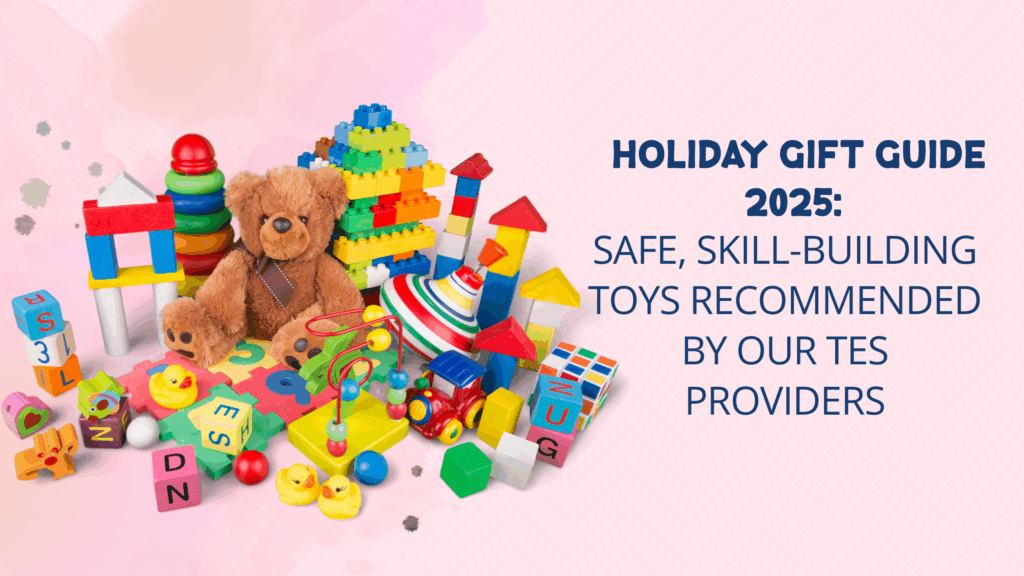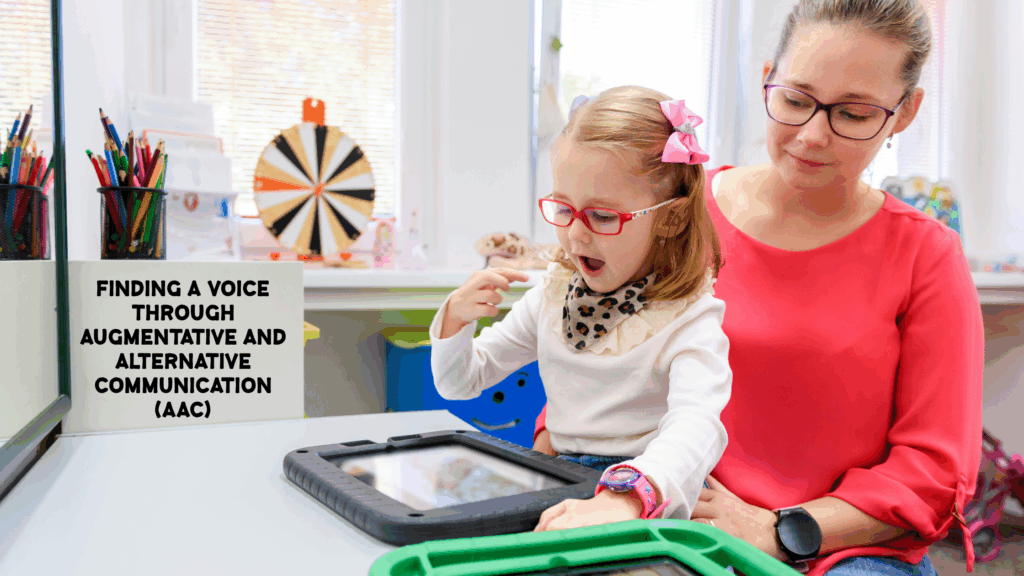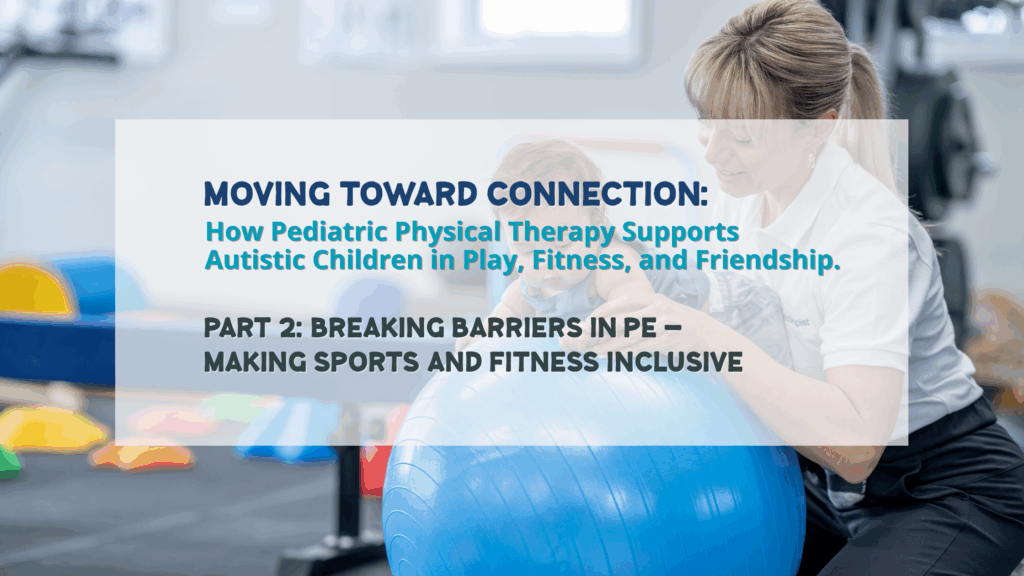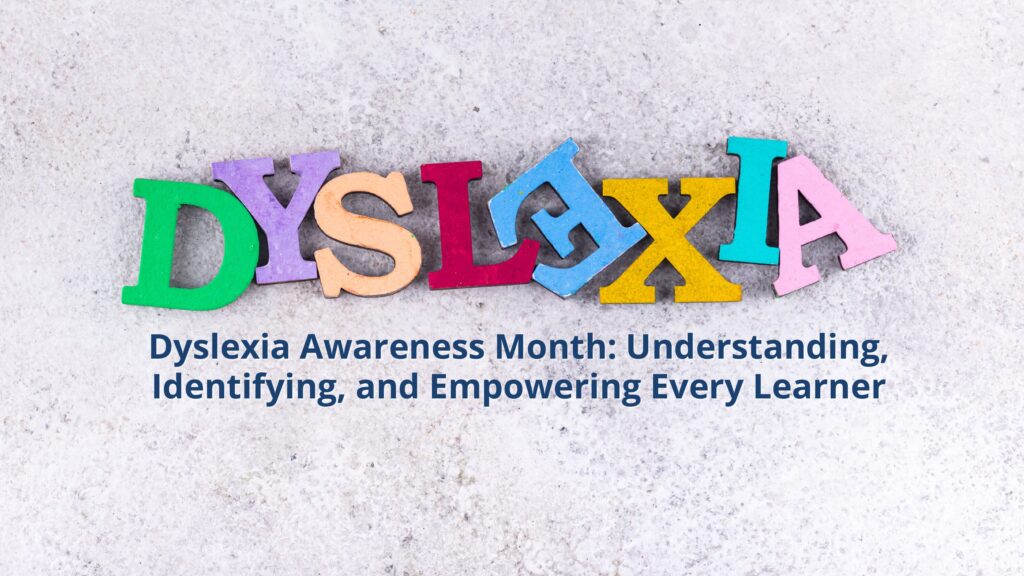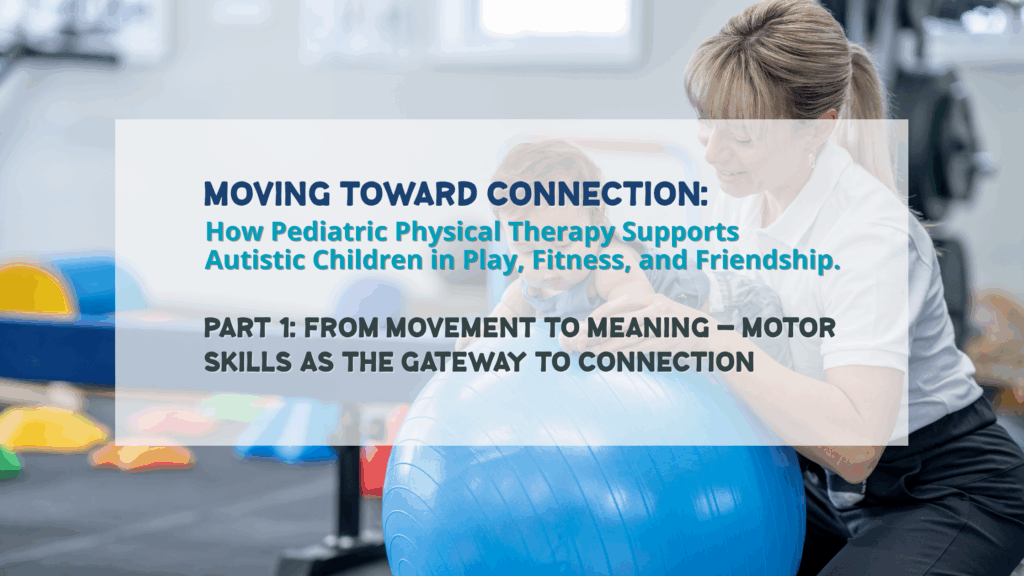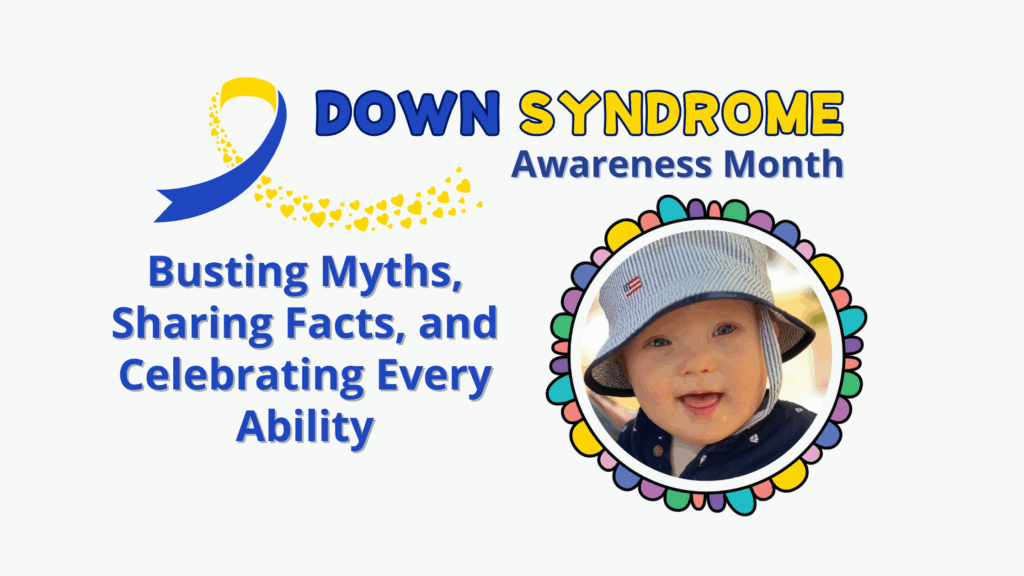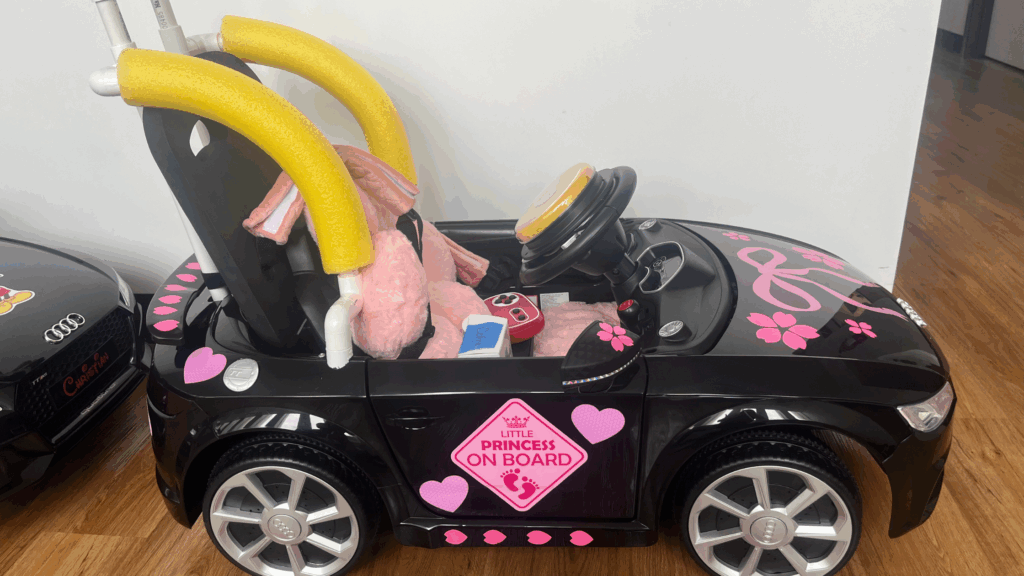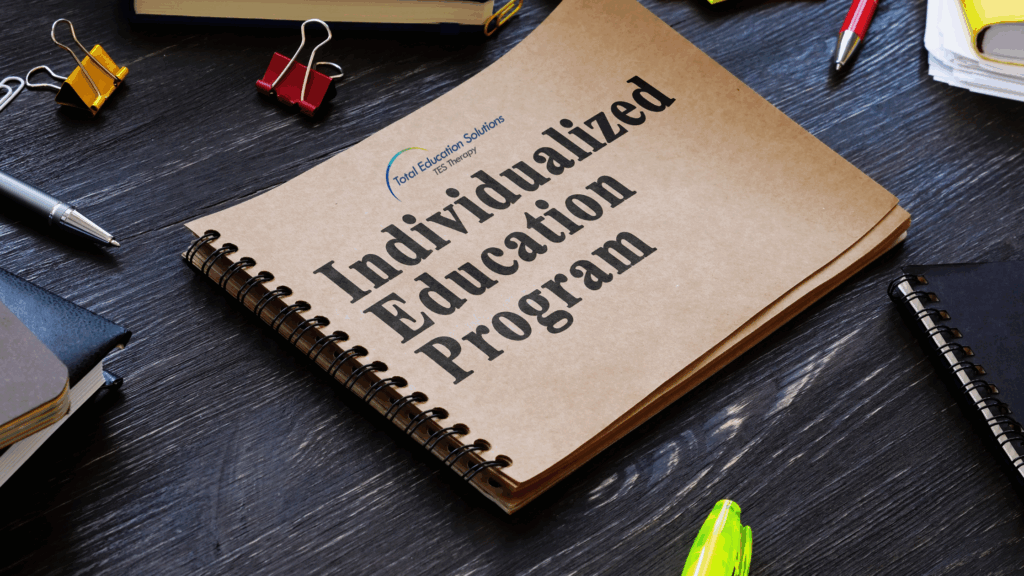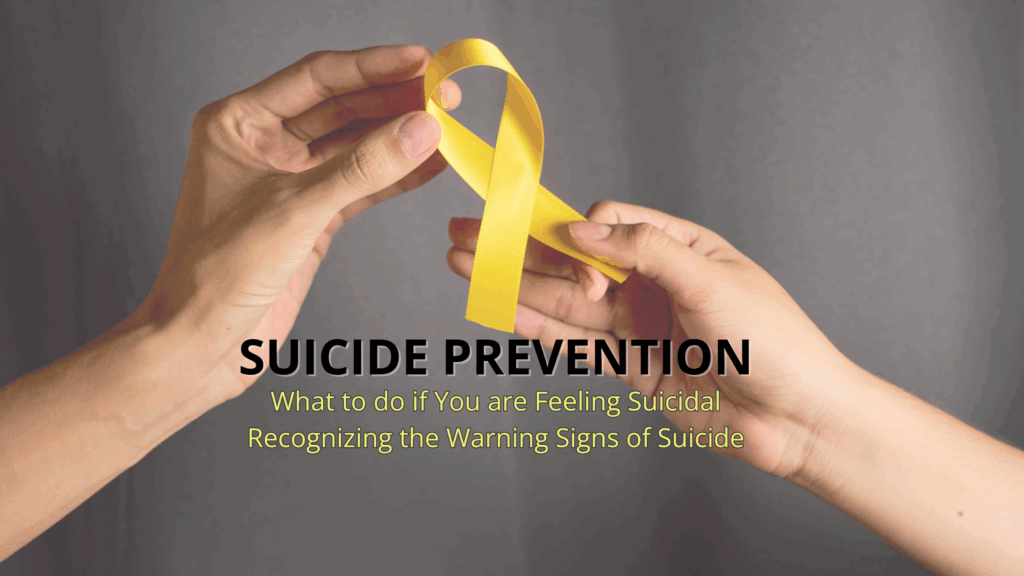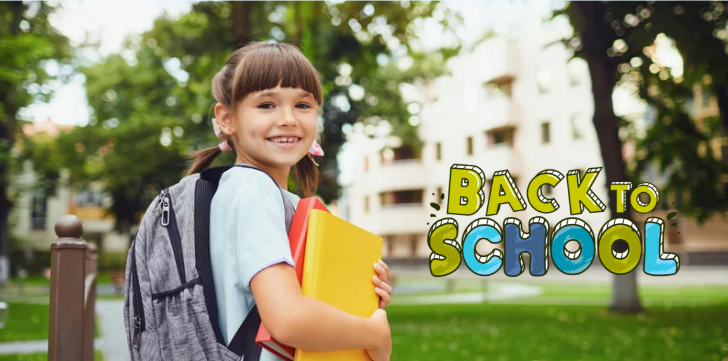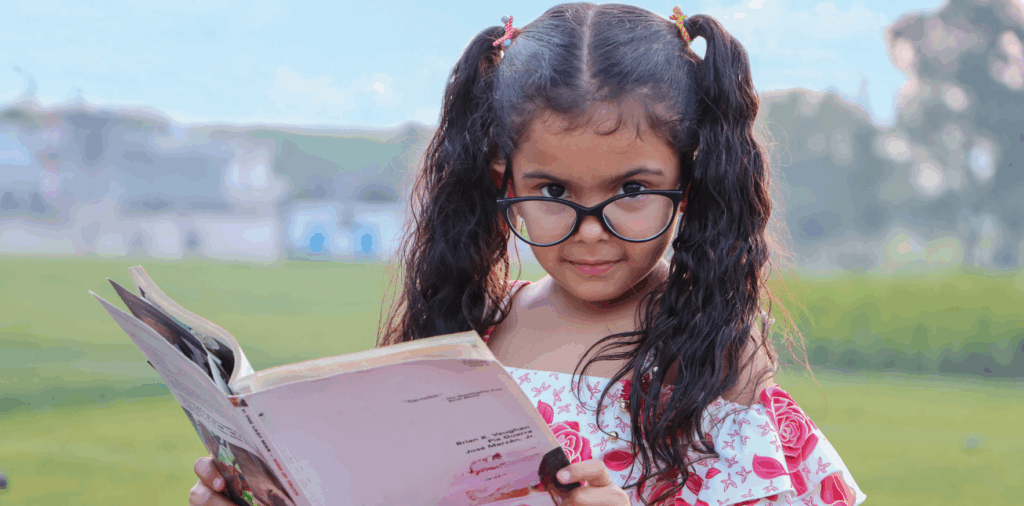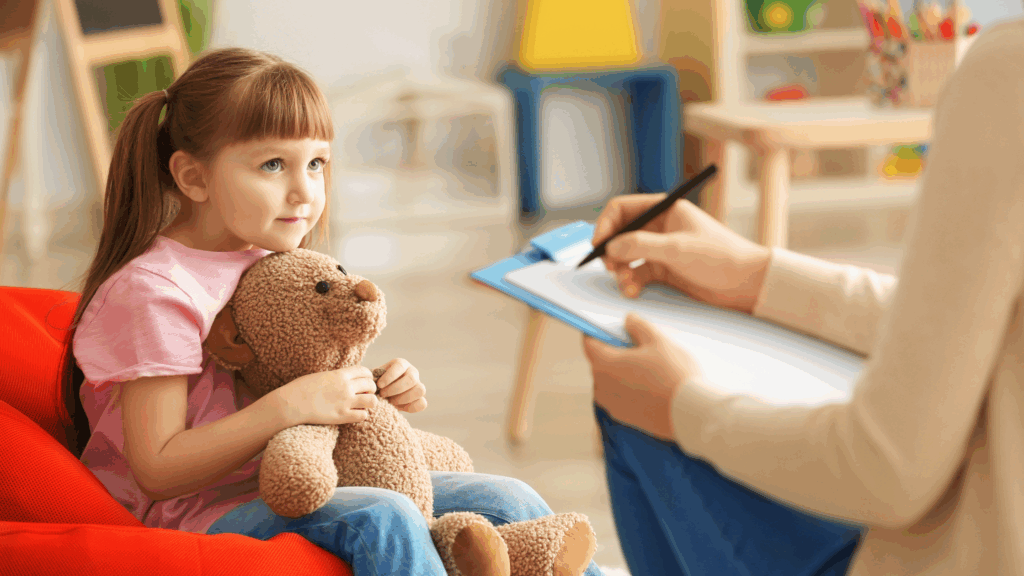Written by: Shannon Steele DPT
Introduction
In Part 1 of our PT Month series, we saw how motor skills open doors to social connection. In Part 2, we explored how PTs adapt PE and sports to foster inclusion. For our final post in the series, we’ll zoom out to the bigger picture: collaboration. Because the truth is, progress doesn’t stop when a PT session ends. Success grows when PTs, families, teachers, and coaches move together.
Why Collaboration Matters
Children engage in physical therapy for only a limited amount of time each week. For the skills they learn to truly take hold, it’s essential that they are practiced and celebrated in all areas of their lives—at home, in school, and within the community. By working together and supporting one another, we can create a consistent approach that helps turn therapy into lasting habits, enriching their lives.
Examples of Collaboration
- At home: Families build confidence through daily routines like biking, playing catch, or setting up mini obstacle courses.
- At school: Teachers adapt classroom transitions, and PE staff use PT-recommended visuals or peer supports.
- In the community: Coaches learn how to modify drills, creating space for every child to succeed.
A Story of Lifelong Success
Marcus, a middle schooler, faced challenges keeping up with his peers in soccer, which made him feel left out and discouraged. However, with the support and collaboration of his family and coach, he found new ways to improve. Together, they modified drills to better fit his needs, and his family devoted time to practice kicking at home. Gradually, Marcus not only developed his soccer skills but also found the confidence to join a community soccer league. This experience not only helped him grow as a player but also allowed him to form friendships that enriched his life beyond the field.
The Bigger Picture
These small steps add up. When everyone collaborates, autistic children develop not only stronger bodies but also enhanced social networks, healthier habits, and improved self-esteem that lasts into adulthood.
Closing Thought
Pediatric PT is about more than therapy—it’s about connection, inclusion, and community. By working together, we ensure every child has the chance to experience the joy of movement and the power of belonging.
This concludes our PT Month blog series, “Moving Toward Connection.” Thank you for celebrating the impact of pediatric PT with us. Together, we can create a world where every child moves with confidence—and never moves alone.
~Shannon Steele DPT

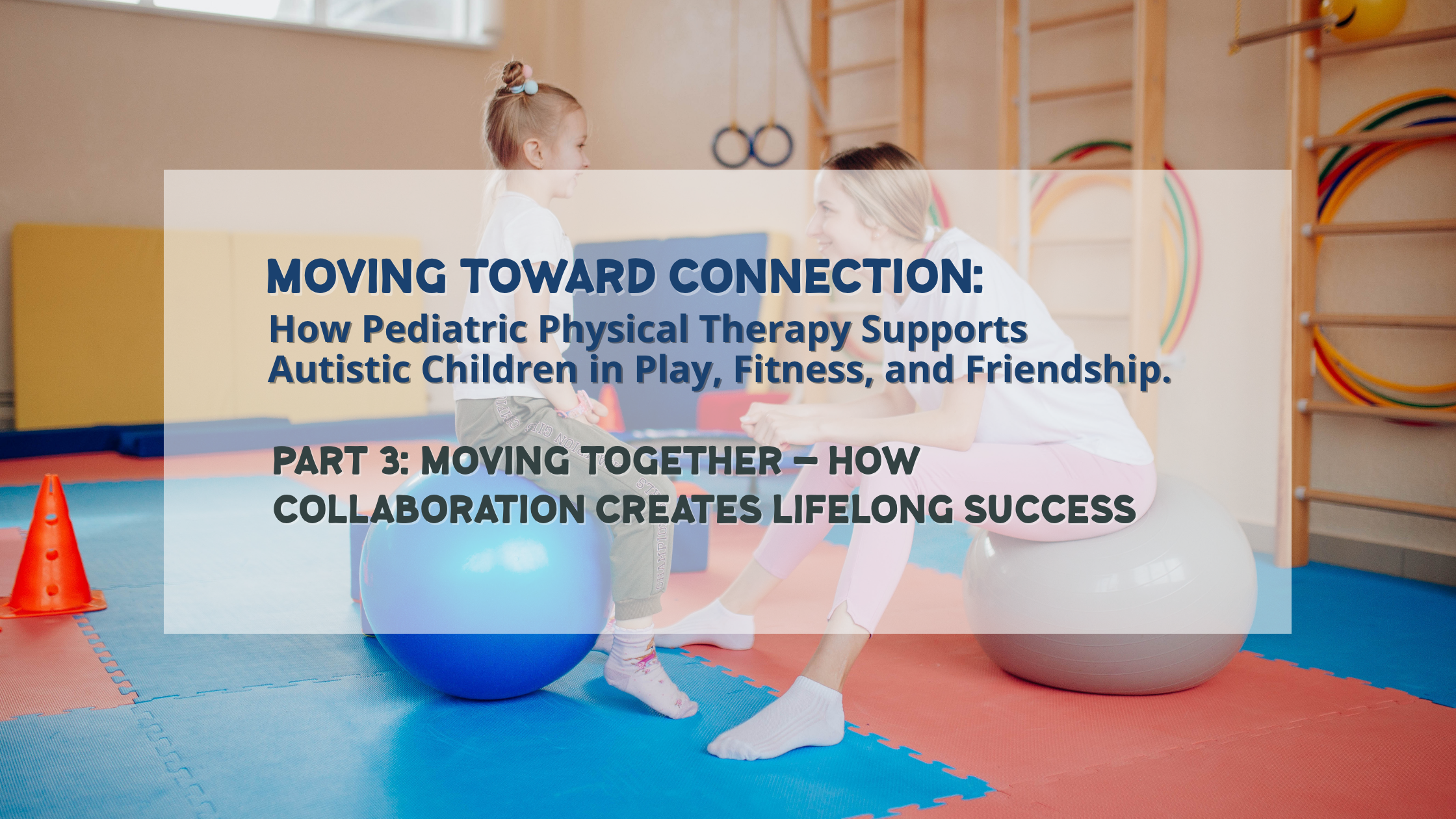
 28 Oct 2025
28 Oct 2025 